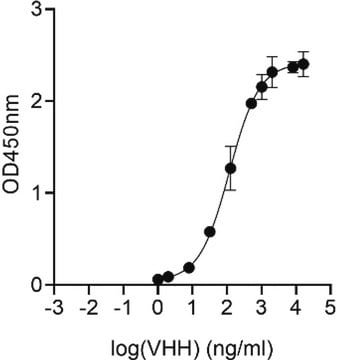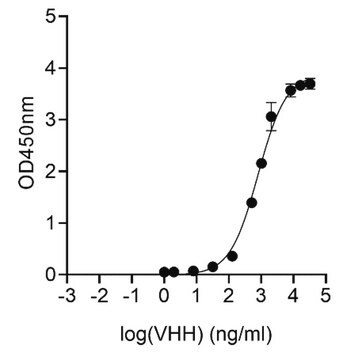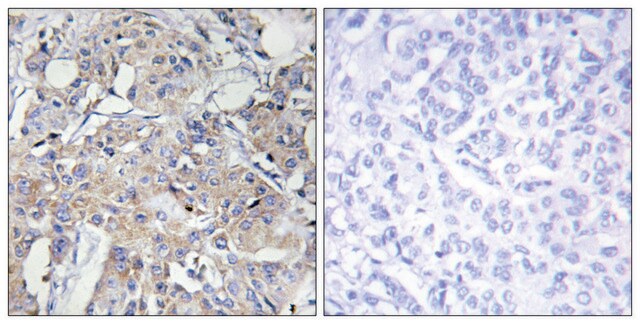SAB5900201
Alpaca Anti-GFP, recombinant single domain Antibody

Recombinant Alpaca(VHH) Nano antibody
Synonim(y):
GFP, Green fluorescent protein
About This Item
Polecane produkty
pochodzenie biologiczne
alpaca
Poziom jakości
rekombinowane
expressed in E. coli
białko sprzężone
unconjugated
forma przeciwciała
affinity purified VHH antibody
klon
GE10, monoclonal
Próba
>95% (SDS-PAGE)
Postać
lyophilized solid
masa cząsteczkowa
13.7 kDa
~15-18 kDa (SDS PAGE under reducing condition)
oczyszczone przez
immobilized metal affinity chromatography (IMAC)
reaktywność gatunkowa
SARS coronavirus
stężenie
1 mg/mL
metody
ELISA: 1:2000-1:10000
immunofluorescence: 1:100-1:600
immunoprecipitation (IP): 0.5-4.0 μg
western blot: 1:1000-1:5000
kolor
colorless
pH
( in PBS, pH 7.4)
izotyp
VHH
numer dostępu Protein ID
numer dostępu UniProt
Warunki transportu
ambient
temp. przechowywania
2-8°C
docelowa modyfikacja potranslacyjna
unmodified
Opis ogólny
Single-domain antibody (sdAb), also called nano-antibody, is the variable region isolated from the antigen-binding variable domain (VHH) of camelid heavy-chain-only antibody. It lacks light chains and a first constant domain(CH1). This configuration confers a number of unique advantages over conventional monoclonal antibodies. The small size of just 15 kDa (2~4 nm), single-domain antibody is the smallest antigen-binding fragment that can easily penetrate tissues, allowing them to bind epitopes that are inacessible to conventional antibodies. These single-domain antibodies offer superior chemical and thermal stability and increased solubility than conventional antibodies. All our antibodies are tested to ensure the highest level of specificity, sensitivity and reproducibility. Alpaca derived anti-GFP VHH single-domain antibody (molecular weight: 13.7 kDa), expressed in E. coli under conditions free from animal derived components.
Specyficzność
Immunogen
Zastosowanie
Opakowanie
Postać fizyczna
Rekonstytucja
Przechowywanie i stabilność
Inne uwagi
Kod klasy składowania
12 - Non Combustible Liquids
Klasa zagrożenia wodnego (WGK)
WGK 1
Temperatura zapłonu (°F)
Not applicable
Temperatura zapłonu (°C)
Not applicable
Certyfikaty analizy (CoA)
Poszukaj Certyfikaty analizy (CoA), wpisując numer partii/serii produktów. Numery serii i partii można znaleźć na etykiecie produktu po słowach „seria” lub „partia”.
Masz już ten produkt?
Dokumenty związane z niedawno zakupionymi produktami zostały zamieszczone w Bibliotece dokumentów.
Nasz zespół naukowców ma doświadczenie we wszystkich obszarach badań, w tym w naukach przyrodniczych, materiałoznawstwie, syntezie chemicznej, chromatografii, analityce i wielu innych dziedzinach.
Skontaktuj się z zespołem ds. pomocy technicznej







